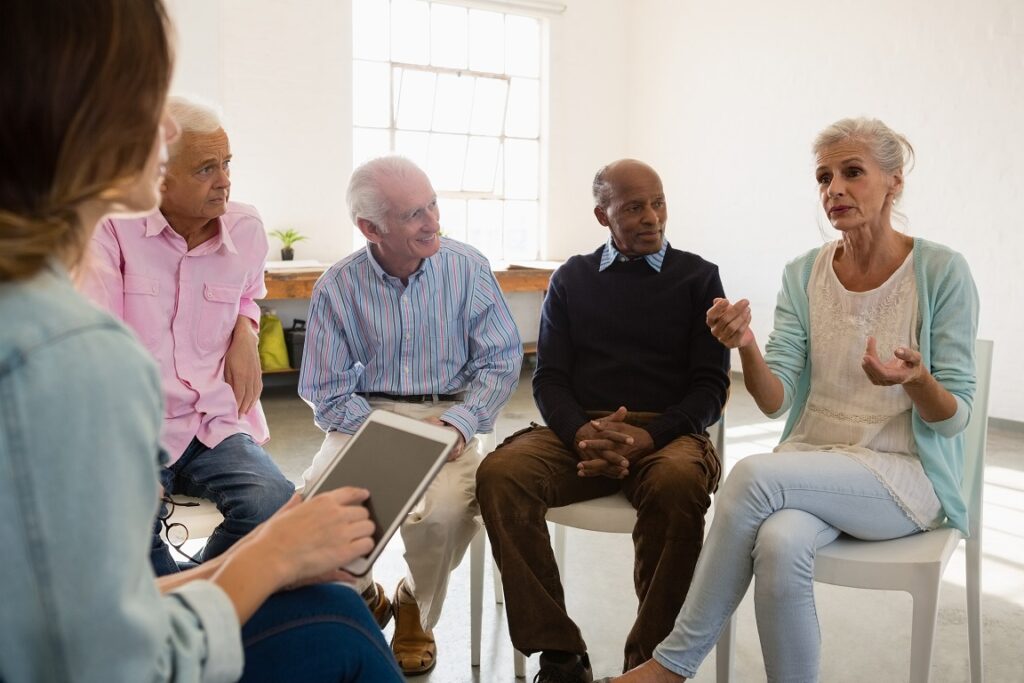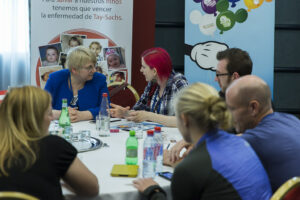By Alex Merckx, Director of Marketing and Partnerships, Cognitant:
The importance of supporting patient education is increasingly recognised as critical to the success of the pharmaceutical industry. But no amount of training can allow someone to fully understand what it’s like to live with a chronic condition from a patient’s point of view.
Health information can provide people with the knowledge and confidence they require to understand and manage their own health, which plays an important role in adherence and improved health outcomes.
For such an approach to be effective, health information must be accessible, engaging and understood by the target audience. Therefore, placing patients and their families, as well as healthcare professionals, at the centre of the design process of patient education is critical. But if the sector is to adopt this approach more widely, how can we balance the needs of different stakeholders?
The need for health education to empower the patient
The pharmaceutical industry has embraced the idea that patients and healthcare professionals are more than just customers for therapies. If people understand their condition and treatment, they will be better placed to manage their own health and comply with medication regimes. This can have a direct impact on health outcomes, validated quality of life measures, and on the cost-effectiveness of healthcare interventions (1). To ensure that people are supported with information that empowers them to better understand and manage their health, we need to move towards the idea of co-creation.

Co-creating in partnership
Co-creation of patient education materials involves working in partnership with stakeholders from early on: from research and development, through to design and delivery. Co-creation with patients has been shown to contribute to the empowerment of patients, leading to better health outcomes, improved patient satisfaction and more efficient resource use (2), while increasing advocacy and trust in pharmaceutical companies.
The co-creation process is commonly seen as understanding the needs and experiences of ‘expert patients’ and their caregivers. However, it should also involve Patient Advocacy Groups (PAGs), families, and healthcare professionals who diagnose conditions and prescribe and monitor treatments.
It is key to consider the patient’s perspective as this can differ significantly from that of a clinician or other stakeholders. For example, a 2018 study by Bayer found that women’s real contraception needs differed markedly from the perception of those needs by healthcare providers (HCP) (3). The double-blind online survey found that 73% of the European women aged 18-49 surveyed were interested in a long-acting reversible contraceptive, for example. In contrast, the 676 HCP also surveyed estimated that only 38% of women would be interested in this option.
Creating an unbiased environment
The co-creation process needs to create a safe and unbiased environment to ensure people are not influenced by other stakeholders. It is important to make sure everyone around the table is consulted and the diversity within the group is considered to ensure every voice gets heard as they are all valid and potentially different.
Building in diversity – viewpoints from different demographics and backgrounds
Critical to the success of co-creation is the balancing of different stakeholders’ opinions and recommendations. Participants from different demographics and backgrounds can have quite different perspectives, and co-creation helps explore this. For example, healthcare professionals have extensive clinical training, experience of routine practice, and are aware of unmet needs. Meanwhile, co-creation with patients allows a pharmaceutical company to walk in a patient’s shoes, bridge gaps, and therefore identify the most logical and engaging solutions that can have the biggest impact on supporting them to manage their condition.

Pharmaceutical companies need to design their patient education materials to speak to a diverse range of patients. Many patients are not able to understand complex medical or pharmaceutical language. Patients may have varying cultural expectations, have a first language that is different from the educational material, or want to access different materials due to age or other barriers.
Overcoming different perspectives in co-creation
To illustrate the importance of weighing up the perspectives of different stakeholders we can consider a series of co-creation workshops we recently did as part of a natural history study. These were held with doctors, nurses, families’ and advocacy groups in Europe and the United States. The aim of the workshops was to aid with the design of an interactive animation series to educate and support the caregivers of children when enrolling in the PROspective Neurological Disease TrajectOry (or PRONTO) study for two rare neurological diseases.
The co-creation workshops aimed to discuss unmet needs, what the curriculum should cover, as well as consider format and creative options to maximise the accessibility of the resource to the audience.. Stakeholders were asked to discuss test concepts and approaches, and to feedback on the final product at the end of the process.
What emerged during the various design phases was how the perspectives of healthcare professionals differed in comparison to what was important for families. For example, nurses and doctors were focused on emphasising that the study did not involve an investigational treatment, and were keen for the resource to clearly communicate the aims of the study, as this is usually a point of frustration for families.
Caregivers and parents of children affected by the condition were more interested in the pragmatic and logistical issues raised by participating in a natural history study, such as inclusion criteria and the time commitment involved. Opinions also varied with the nationality of the co-creation groups. Spanish groups wanted less information to be shared with patients, US groups wanted to share everything, and UK groups were somewhere in the middle.
Through productive and collaborative discussion, the educational curriculum and video materials were refined to produce something that met everyone’s key needs. Time in the workshop was dedicated, for example, to discussing differences of opinion with each group, including the pros and cons of various approaches. Individual patients and their caregivers were also asked to feed their opinions into each topic as well.
Through collaboration and involving the patient community, as well as other stakeholders, a series of patient information materials were designed. These were regarded as highly innovative: PRONTO was the first rare-disease natural history study to use videos and animations for patient information. Each interactive animation is one to two minutes long and can be viewed at home. There is a video covering each stage in the study process, with the aim of informing families about next steps and preparing them for hospital visits. The videos are available in multiple different languages to make them more accessible to patients. The success of the project will be measured by user feedback and engagement metrics.
How can we balance the needs of different stakeholders?
Variations in opinion are common in co-creation, and it’s crucial to explore this; for example, why is there difference in opinion? How strongly do they feel about this? Are there stronger reasons to follow one group’s advice over another, if consensus can’t be reached?


By discussing as a group, it’s possible to examine why people think differently. The group may even discover that people align in their views when the issues are discussed further. If this isn’t the case, it may be helpful to liaise with relevant external advisors and to provide creative and practical advice to the groups to aid them in their decision making. Asking for opinions on pros and cons, as in the PRONTO study, is also a strong way forward.
It is this co-creation process itself which helps to balance the needs of different stakeholders. Co-creation allows for listening and adjustment, and it ensures that the end result isn’t just valuable to one party. Ultimately, co-creation delivers health education that is meaningful to the patient at an emotional, cultural, and mental level so that it will achieve the best health outcomes for them. Going forwards, co-creation with multiple stakeholders promises to improve trust in the pharmaceutical industry and to lead to the creation of therapeutics that more effectively meet the needs of patients and healthcare providers alike.
END
References:
- J, et al. Factors affecting therapeutic compliance: A review from the patient’s perspective. Ther Clin Risk Manag 4(1):269 (2008)
- Russo, G., Tartaglione, A.M., and Cavacece, Y. Empowering Patients to Co-Create a Sustainable Healthcare Value. Sustainability. 11, 1315 (2019)
- Merki-Feld G.S., et al. Are there unmet needs in contraceptive counselling and choice? Findings of the European TANCO Study. Eur J Contracept Reprod Health Care 23(3): 183-93 (2018)
- Murphy, J. and Coster, G. Issues in patient compliance. Drugs 54(6):797-800 (1997)
- Goldhammer D.L, et al What do young Australian women want (when talking to doctors about contraception)? BMC Fam Pract 18(1):1-10 (2017)
Cognitant
Looking to empower people with health information for better patient outcomes?
Related News
Kidney Research UK invests in Healthinote patient education platform which could support >15m people with long term health conditions
April, 2025
Oxford, January 2025 – Kidney Research UK, the leading charity dedicated to kidney health, has made a significant investment in Cognitant Group Ltd, a leading...
Webinar Insights – Compliance vs Patient Engagement: Can They Co-Exist?
April, 2025
Is compliance really a barrier to meaningful patient engagement in pharma, or are outdated myths holding us back? In this recent webinar, Dr Tim Ringrose,...
Funding awarded to innovations that support early diagnosis and rehabilitation of Stroke patients
March, 2025
SBRI Healthcare, an Accelerated Access Collaborative (AAC) initiative, in partnership with the Health Innovation Network, has awarded £2.5 million for the development of five innovations...